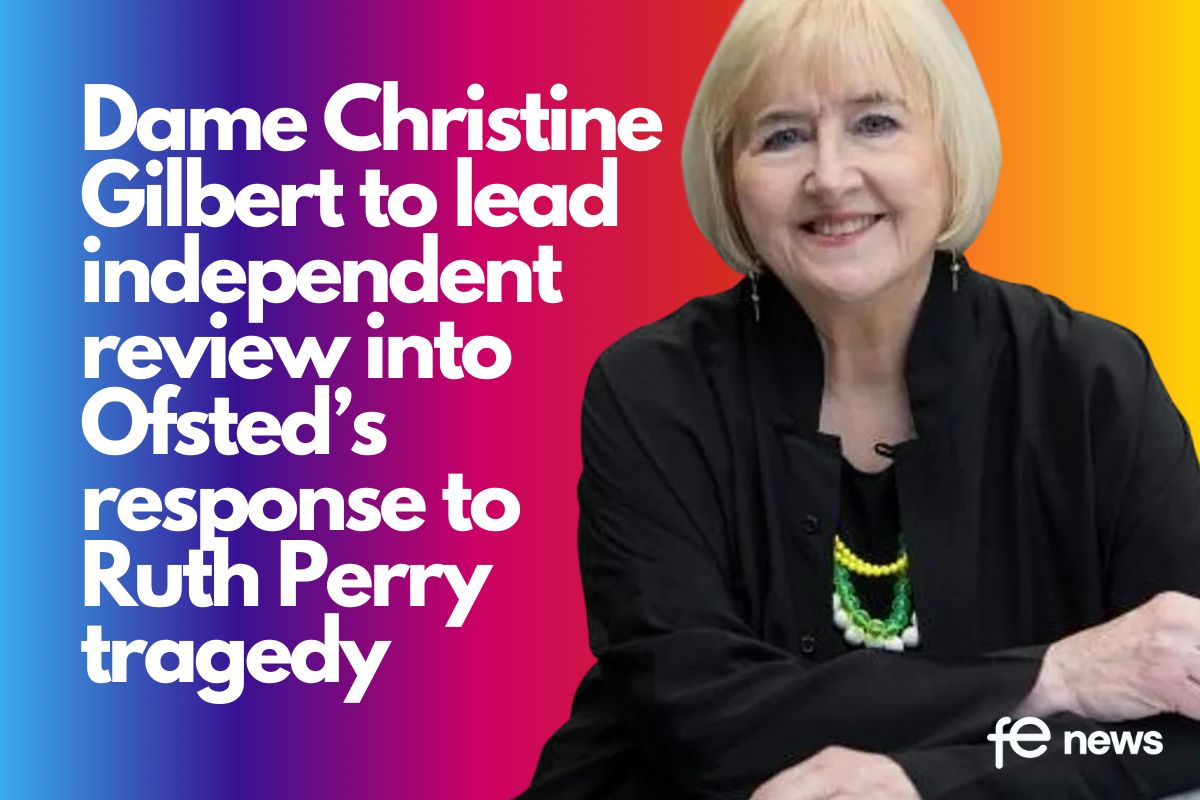Recognising and protecting young people in your care from harm

As someone who works with young people, you have both a legal and moral responsibility to ensure that the children and young people under your care and supervision are safe from harm.
There is a great deal you can do to safeguard them and promote their wellbeing.
EduCare are a company with a mission to empower people with the right knowledge and confidence to act, and have written this guide to highlight the ways in which you can raise your awareness of abuse and neglect, recognise early signs that might indicate a problem and show you how to take action if you know or suspect that a child or young person needs help.
The difference between safeguarding and child protection
It is important to note the difference between ‘safeguarding’ and ‘child protection’.
‘Safeguarding’ is what anyone working with young people should be doing. This is linked to promoting welfare and can be described as the following:
- Protecting children from maltreatment
- Preventing impairment of children’s health or development
- Ensuring children grow up in circumstances consistent with the provision of safe and effective care
- Taking action to enable all children to have the best outcomes
‘Child protection’ refers to the action that is taken to protect children who are suffering, or likely to suffer significant harm.
Child protection forms a small part of safeguarding and promoting welfare. Effective child protection processes are an essential part of the wider work to safeguard and promote
welfare; they also reduce the need for action to protect children from harm.
What are your key safeguarding responsibilities?
The key safeguarding responsibilities of anyone who works with young people, as the following:
- Respect all individuals regardless of their age, gender, ethnicity, developmental stage, sexual orientation, religion, belief or whether the individual is disabled. Do not let uncertainty around cultural or religious differences prevent you from taking action if you think that a child is at risk
- Develop your personal code of conduct that you abide by at all times to ensure you protect children from harm and minimise the likelihood of allegations being made against you
- Ensure your safeguarding training is up to date and you understand your organisation’s policies and procedures. Be absolutely clear that you know what to do if you have concerns about a child or a colleague’s behaviour
- In your work with children, be open, accessible, always prepared to listen and be supportive to children’s needs
- If you are in a position where you are responsible for supervising and monitoring others, ensure that you do not solely focus on their practical activities and day-to-day role with children, but also enquire about their behaviours and boundaries and what they believe is acceptable
Recognising child abuse
In order to be able to protect children and young people in your care from harm, it is crucial that you are able to recognise abuse.
There are many children who experience negative influences who do not come to the notice of people who can help them because abusers can go to great lengths to conceal their abuse.
As someone with a responsibility towards children in your care, you can play your part in helping to protect children by being aware that abuse exists and being prepared to act should you suspect abuse.
When considering the possibility of abuse, it is important to evaluate what you know about the child then consider both the physical and behavioural signs that are giving you cause for concern.
Abuse can take many forms. Below, we have detailed the key areas to be aware of.
Types of child abuse
Child abuse can be grouped into four categories, these are:
- Physical
- Sexual
- Emotional
- Neglect
It is important to always remember that child abuse can and does occur to children from any background, culture, class, ethnicity or faith.
The Toxic Trio
Defined below, the toxic trio are three types of abuse, which although not as direct as those described above, can still be viewed as indicators, which, if present, increase the risk of harm to children and young people. There have been many cases in which children have been exposed to long periods of ‘the toxic trio’ which have resulted in serious harm or loss of life.
- Domestic abuse – Children who live in a volatile household can experience physical and emotional damage, which can be long lasting
- Substance misuse – Parents who are regularly involved with drug or alcohol misuse are less likely to be able to provide a safe, stable, stimulating environment
- Mental ill-health – Parents who experience mental ill-health such as psychosis, may find it hard to encourage and provide emotional stability for a child
Forms of abuse
The following signs of abuse are not exhaustive and remember that a child may be experiencing more than one type of harm; for example, emotional abuse and neglect.
Physical abuse
Physical abuse may involve:
- Hitting
- Shaking
- Throwing
- Drowning
- Burning or scalding
- Poisoning
- Suffocating
- Otherwise causing physical harm to a child.
Physical harm may also be caused when a parent or carer fabricates the symptoms of or deliberately induces illness in a child. It can also include inappropriate use of restraint.
Signs to look out for
Children often get bumps and bruises during their everyday play or social interaction, however, it doesn’t mean that they are being abused. All injuries need to be considered in the light of the age of the child, their stage of development, their social background, where injuries are on their body and any explanation given.
Physical abuse can be identified if you notice any of the following signs:
- Fingermark bruising on any area of the body, where bruises are unlikely to appear in everyday play
- Presence of injuries that are in several stages of healing, suggesting that a child has experienced repeated maltreatment over time
- Injuries to the soles of the feet
- Bald patches on a child’s head
- Injuries that form a shape or pattern
- Scald marks and burning, including cigarette marks
- Black eyes, broken bones, bite marks
- Marks that might indicate a child has been restrained or strangled
- Injuries that are inconsistent with the explanation given
It may be that whilst you don’t notice anything physically, there are behavioural signs which you may notice. These can include:
- Flinching when touched
- Inability to recall how injuries occurred
- Avoiding getting changed for sport or other activities
- Wearing trousers and shirts or blouses with long sleeves even on hot sunny days, although remember to consider this in the light of the individual child (e.g. some children are dressed modestly for religious and/or cultural reasons)
- Reluctance to go home
- Excessively eager to please
- Being aggressive or withdrawn
- Attempts to run away
- Being sad, frequently crying
- Drug and/or alcohol misuse
- Behaviour that is not consistent with a child’s stage of development
Sexual abuse
Sexual abuse involves someone forcing or enticing a child to take part in sexual activities.
This may not necessarily involve a high level of violence and the child may or may not be aware of what is happening.
Research shows that many children and young people who are sexually abused do not tell anyone about their abuse. Many children who are sexually will also have no visible signs at all, due to the attacker not wanting to leave evidence.
Sexual abuse can occur in many ways. It can be perpetrated by both adult males and females, as well as other children. It can also occur through a group of children sexually assaulting or sexually harassing a single child or group of children.
It is important to note that if committed by another young person, there may be many reasons for this abuse being committed. The reasons for this may be just as distressing to the young person committing this behaviour as it is to the young person being abused.
Sexual abuse may involve physical contact, including:
- Assault by penetration
- Non-penetrative acts such as masturbation, kissing, rubbing and touching outside of clothing
Sexual abuse isn’t always a form of physical abuse though, it can also be a non-contact activity. The following can all be defined as sexual abuse:
- Watching sexual activities
- Encouraging children to behave in sexually inappropriate ways
- Inappropriate role play
- Involving children in looking at, or in the production of, sexual images
- Grooming a child in preparation for abuse (including via the internet)
As stated above, many children who are sexually abused will have no visible signs of abuse. However, there are several physical signs to be aware of in some situations. These include:
- Stomach pains
- Genital soreness, bleeding or discharge
- Recurring genital-urinary infections
- Discomfort in walking or sitting
Key to recognising sexual abuse of a child is by identifying a change in their behaviour. Behavioural signs to be aware of include:
- A change in behaviour
- Avoiding getting changed for sport or other activities
- Sexual knowledge, language and behaviours beyond their age
- Self-harming
- Fear or avoidance of being with a person or a group of people
- Being withdrawn
- Unexplained amounts of money
Emotional abuse
Emotional abuse is the continued emotional maltreatment of a child to the point that it causes severe adverse effects on the child’s health and emotional development. This is also sometimes referred to as psychological abuse.
All types of abuse of a child may contain some level of emotional abuse, however, this can occur alone.
Emotional abuse may involve:
- Conveying to a child they are worthless or unloved, inadequate, or not valued
- Not giving a child the opportunity to express their views
- Deliberately silencing a child or making fun of what they say or how they communicate
- Inappropriate expectations being imposed on the child
- Rejecting or ignoring a child completely
- Using degrading language or behaviour towards them
- Preventing the child from interacting socially with other children or adults
- Experiences of bullying
- Causing children to feel frequently frightened or in danger
- The exploitation or corruption of children
Whilst emotional abuse alone is one of the harder types of abuse to identify, there can be several signs to look out for.
Physical signs of emotional abuse may include:
- Self-harm marks
- Erratic weight or growth patterns
- Delayed development, either physically or emotionally
- Erratic behaviour
Behavioural signs may include:
- Difficulty in forming relationships
- Inappropriate attention-seeking
- Being withdrawn
- Unexplained underachievement
- Self-harming
- Bed-wetting
- Disturbed sleep
Neglect
Neglect is the persistent failure to meet a child’s basic physical and/or psychological needs, likely to result in the serious impairment of the child’s health or development.
Neglect may involve a parent or carer failing to:
- Provide adequate food, clothing or shelter (including exclusion from home or abandonment)
- Protect a child from physical or emotional harm or danger
- Ensure adequate supervision (including the use of inadequate care-givers)
- Ensure access to appropriate medical care or treatment
- Respond to a child’s basic emotional needs
Neglect can be recognised by the following physical signs:
- Unattended medical or dental problems
- Lack of energy due to inadequate food intake and/or poor nutrition
- Poor personal hygiene/unwashed clothing
- Inadequate clothing (not having warm clothes in winter)
- Untreated skin or hair problems (rashes, sores, flea bites, head lice)
- Very thin or swollen stomach
- Constantly hungry
- Lack of muscle tone (bones appearing to stick out)
- Constant tiredness
There are also behavioural signs which could indicate neglect, signs to be aware of include:
- Demanding constant attention and affection
- Difficulty in making friends
- Missing or irregularly attending school
- Frequent lateness
- Stealing or begging food from others
- Emotional withdrawal
- Lack of aspiration
- Low self esteem
- Poor social relationships
- Alcohol or substance misuse
- Developmental delay (weight, language, social skills)
What to do if you suspect abuse
Your organisation will have a safeguarding lead, if you suspect abuse it is your responsibility to inform them in the first instance.
If you have concerns about a young person, doing nothing is not an option because you will not be fulfilling your duty of care.
Whilst it is not your responsibility to investigate, you do have an obligation to pass on disclosures, allegations or your concerns to your organisation’s designated safeguarding lead. They can act to protect a young person should it be necessary.
How to respond if a young person confides abuse to you
If a young person tells you that they are being abused, it is important that you know
how to respond. Below are some universal principles regardless of the age of the person.
It is important you:
- Stay calm
- Find a quiet place where your conversation won’t be interrupted. Keep in mind your
organisation’s guidelines for being alone with a young person - Attempt to make the young person or young person feel safe and secure
- Be patient
- Listen carefully and take what you are being told seriously
- Reassure them that they have done nothing wrong in telling you
- Write down what you have been told as soon as possible. This should be dated, timed and signed. It should then be given to the designated safeguarding lead immediately
Do not:
- Promise confidentiality
- Ask leading questions
- Probe for more information
- Show emotions such as panic, shock or anger
- Make the young person repeat their story
- Interrupt
- Give an opinion
- Inform anyone until you have a discussion with your safeguarding lead
Dawn Jotham, EduCare’s Pastoral Care Specialist
The above information has been taken from EduCare’s best selling online Child Protection in Education course. Find out more about EduCare.












Responses